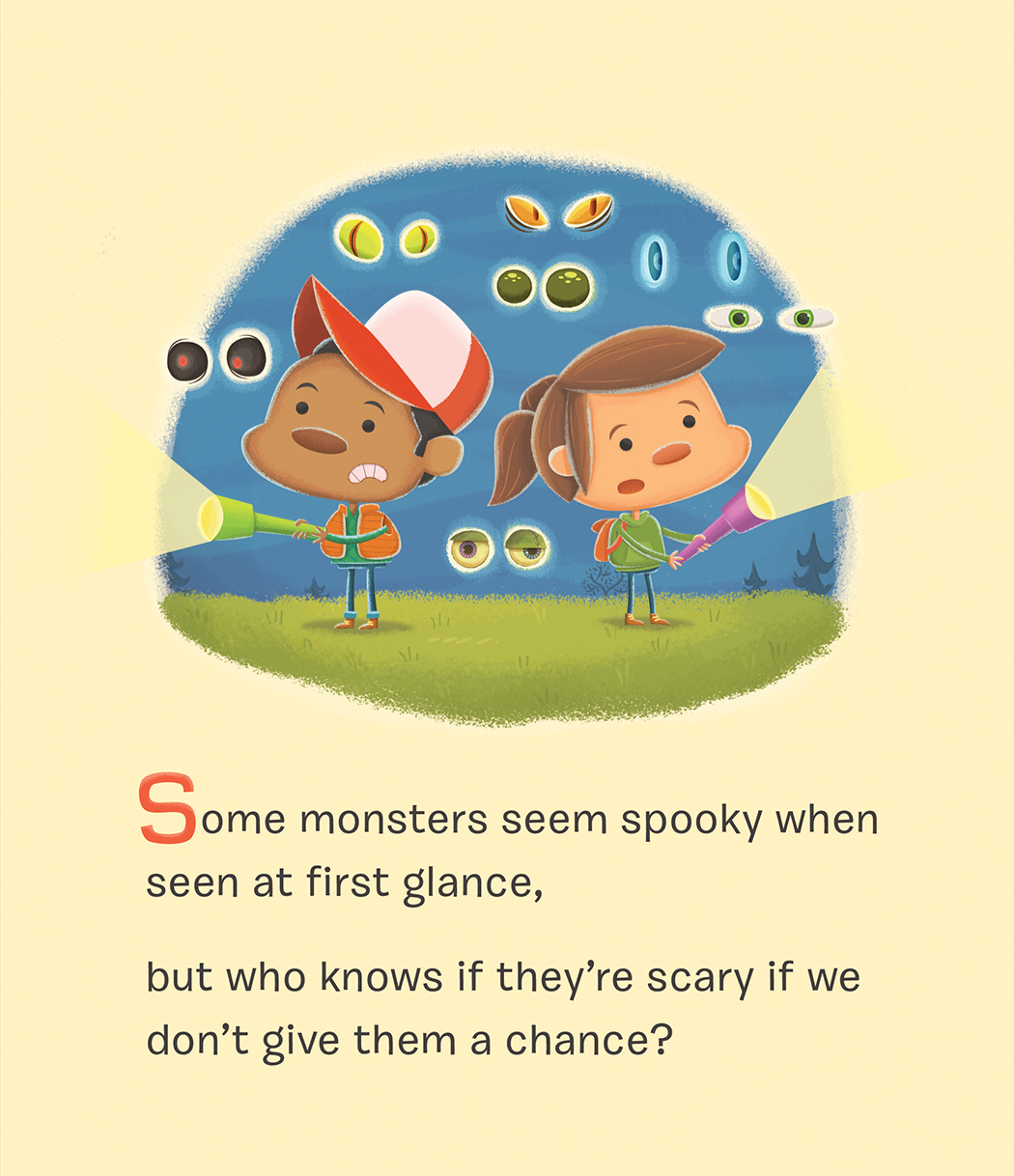
Monsters don’t have to be scary
“Is this book too scary for children?” This one of the most common questions we receive about Monster ABC, and one of our favorite to answer. In fact, answering this question speaks to the heart of why we create children’s books featuring monsters in the first place.

Sources: Grover (Sesame Workshop); The Thing (Universal Pictures, Turman-Foster Company) Model by Casey Love.
Grover vs. The Thing
As we touched upon in our recent interview with Threadless, Monster ABC has more than one raison d'etre. It’s true that we set out to make a funny, silly and engaging book that adopts a unique approach to teaching the alphabet. It’s also true that we wanted to introduce monsters to children as creatures that are not necessarily to be feared. They are of the imagination and therefore can take on whatever characteristics the imagination chooses. For instance, the concept of a generic “monster” when presented as the toothy, bile bubbling nightmare from The Thing delivers a sense of dread, horror and disgust. However, a monster delivered in the form of fuzzy, huggable Grover can provide a sense of comfort and unconditional friendship. They’re both monsters, technically, but they lead our imaginations down completely different paths.
A lesson beyond the alphabet
We bookend the 26 monsters in Monster ABC with a narrative that hopefully helps children learn this idea. The first illustration in Monster ABC is a nighttime scene featuring two nervous-looking children with flashlights surrounded by various sets of monster eyeballs. This verse kicks off the proceedings: “Some monsters seem spooky when seen at first glance / but who knows if they’re scary if we don’t give them a chance?”
A parade of 26 silly, approachable and definitely-not-frightening monsters follow before we reach the final verse of the book, which features the same two children from the first spread, but this time they’re laughing and playing with monsters from the book. The verse reads, “Now you can see, monsters aren’t really so bad— / It’s hard to be scared when you’re laughing like mad!” This narrative journey from trepidation to laughter is meant to mirror the journey we hope many children take as they experience Monster ABC and subsequent Hazy Dell Press titles.

Suitable for various levels of trepidation
We know that children take in and react to things differently, and sometimes kids are going through a legitimate “monsters are scary phase.” Counterintuitively, this phase may be an opportune time to introduce your child to friendly monsters, such as those found in Sesame Street and Monster ABC. According to Reshma Memon Yaqub in Parents Magazine, a viable soothing strategy to ease a child’s fear is to re-introduce the child to friendly versions of the feared object so as to counter-program the child’s imagination. She uses bugs as an example:
If he screams at the sight of bugs, read him books about friendly ones or draw pictures of them. When he stops fearing the idea of bugs, he may feel more brave around real ones, says Stephen W. Garber, PhD, coauthor of Monsters Under the Bed.
The logic holds true for monsters—if a child spends enough time encountering friendly monsters like Grover, Casper the Friendly Ghost or Sully and Mike from Monsters Inc., the better equipped he or she will be when inadvertently encountering monsters that are intended to instill fear instead of delight.
With Monster ABC, we hope to primarily equip parents with a fun, colorful and humorous book, but if we can assuage some fears and make the world a little bit less scary along the way, then all the better. After all, there are plenty of non-imaginary things to be afraid of—there’s no reason for imaginary monsters to be a source of stress.


